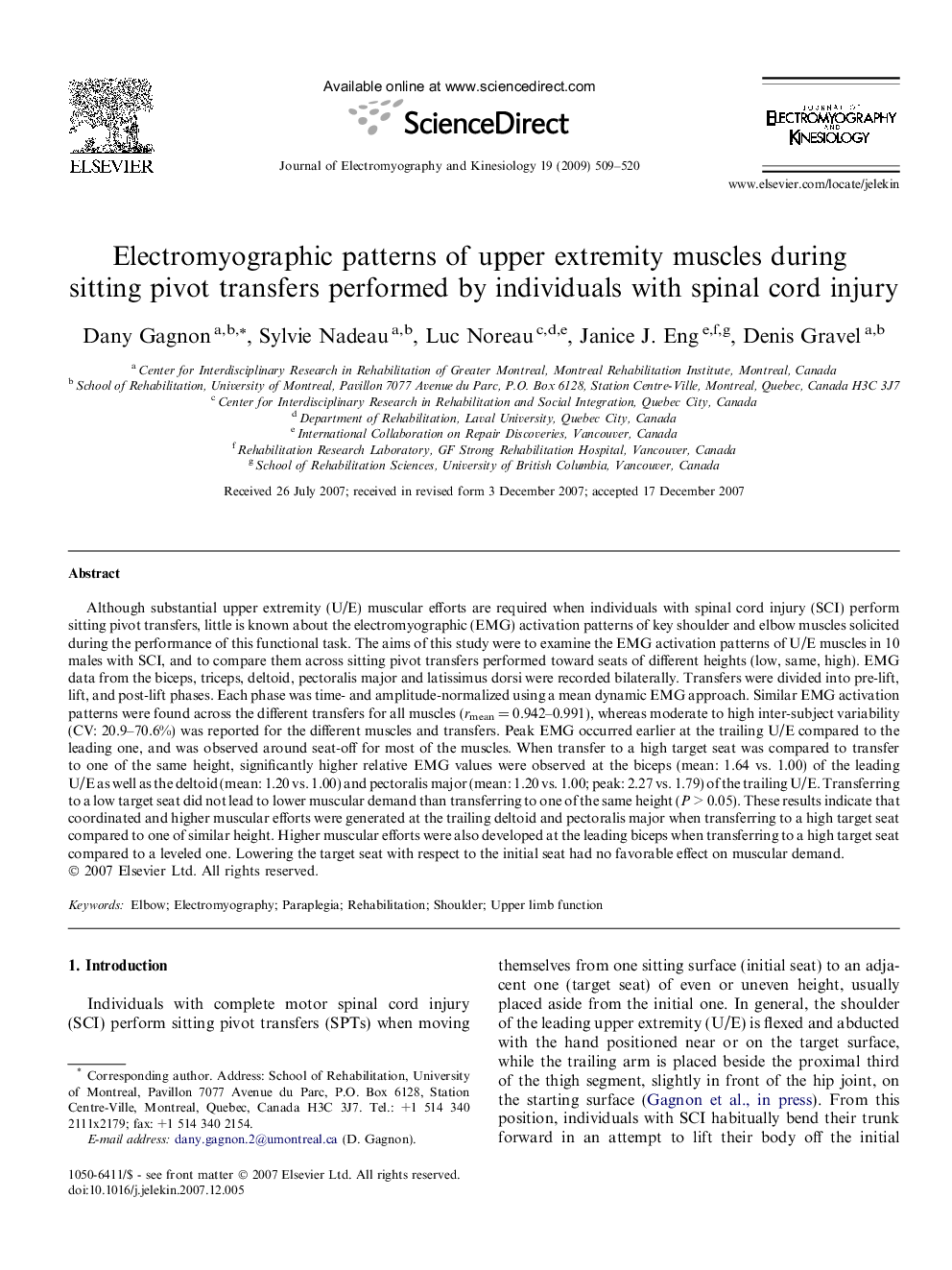| Article ID | Journal | Published Year | Pages | File Type |
|---|---|---|---|---|
| 4065349 | Journal of Electromyography and Kinesiology | 2009 | 12 Pages |
Abstract
Although substantial upper extremity (U/E) muscular efforts are required when individuals with spinal cord injury (SCI) perform sitting pivot transfers, little is known about the electromyographic (EMG) activation patterns of key shoulder and elbow muscles solicited during the performance of this functional task. The aims of this study were to examine the EMG activation patterns of U/E muscles in 10 males with SCI, and to compare them across sitting pivot transfers performed toward seats of different heights (low, same, high). EMG data from the biceps, triceps, deltoid, pectoralis major and latissimus dorsi were recorded bilaterally. Transfers were divided into pre-lift, lift, and post-lift phases. Each phase was time- and amplitude-normalized using a mean dynamic EMG approach. Similar EMG activation patterns were found across the different transfers for all muscles (rmean = 0.942-0.991), whereas moderate to high inter-subject variability (CV: 20.9-70.6%) was reported for the different muscles and transfers. Peak EMG occurred earlier at the trailing U/E compared to the leading one, and was observed around seat-off for most of the muscles. When transfer to a high target seat was compared to transfer to one of the same height, significantly higher relative EMG values were observed at the biceps (mean: 1.64 vs. 1.00) of the leading U/E as well as the deltoid (mean: 1.20 vs. 1.00) and pectoralis major (mean: 1.20 vs. 1.00; peak: 2.27 vs. 1.79) of the trailing U/E. Transferring to a low target seat did not lead to lower muscular demand than transferring to one of the same height (P > 0.05). These results indicate that coordinated and higher muscular efforts were generated at the trailing deltoid and pectoralis major when transferring to a high target seat compared to one of similar height. Higher muscular efforts were also developed at the leading biceps when transferring to a high target seat compared to a leveled one. Lowering the target seat with respect to the initial seat had no favorable effect on muscular demand.
Related Topics
Health Sciences
Medicine and Dentistry
Orthopedics, Sports Medicine and Rehabilitation
Authors
Dany Gagnon, Sylvie Nadeau, Luc Noreau, Janice J. Eng, Denis Gravel,
